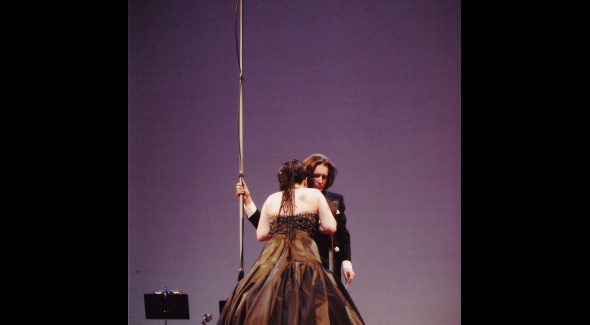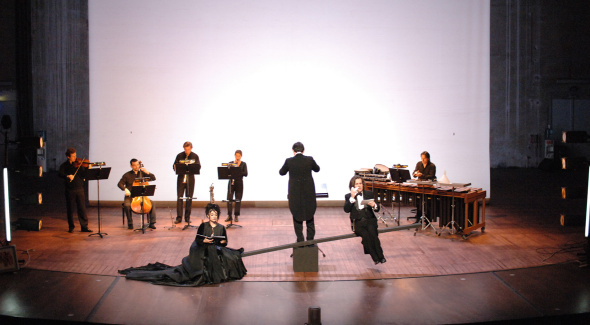Arnaud Petit
Composer Arnaud Petit has been interested in, and has worked with the image, in various forms, for some time. Working with silent film (The Passion of Joan of Arc by K. Dreyer, Tabu by W. Murnau) at the IRCAM in the late 80s, he heightened the original power of the image’s mise-en-scène by the use of music and sound. In the opera La Place de la République, premiered at the Pompidou Centre in the early 90s, he was responsible for creating the central cinematographic part of the opera. The power of music when confronted or combined with images is not neutral. Arnaud Petit endeavoured to make this his primary focus in a spectacular context that shocked or surprised many at the time. Since then, orchestral, as well as electronic music have played an important role in his productions, as have various operas. La bête dans la jungle [The Beast in the Jungle] based on the novella of the same name by Henry James will soon be reprised at the Cologne Opera House.
For several years, Petit has also been interested in the relationship between “popular” music and “written” music. Last year, with D. Yvinec, he created the “Chaos Orchestra” which explores compositions in which musical worlds of various kinds come together, performed by musicians with very different practices and training. This musical experiment has received several awards in Europe and the United States.
The technological opera project “ID” which he is currently working on, notably at Le Fresnoy in close collaboration with Alain Fleischer, is a continuation of Petit’s thematic concerns, but in a new form. Here, technology and all that it allows today through the synthesis of sound and image, plays a dominant role.
Duality, the mirror, identity, confusion. This is what this technological opera currently entitled “ID” evokes. A singer suddenly sees her image independently come to life, as if a mirror had held her image captive before endowing it with a separate, independent life. Here is a mirror which creates rather than deforms. This duality or division, from which confusion is born, (a theme that also runs through much of Alain Fleischer’s work, here in the role of librettist), is the driving force of the opera unfolding before us.
A singer (we used to say “prima donna,” an old-fashioned term which also captures the notion of an artist performing or staging her voice), musicians, dramaturgy and set design, a technological apparatus. In this work, the sung voice, which identifies the genre by magnifying it, is also subject to a questioning of this genre, just as much as the new dual body, created from artificial computer imaging, will be technically brought to life by a mime, before perhaps finding its own animation (its own soul...).
A face-off between a real and an artificial body, this is also what the music will accentuate. The actual voice confronts the invented voice, both sung, thereby adding to age-old questions about duality, whether that of the body, the mind, or identity (although we have been aware of cases of the latter two for a long time).
Besides, are we not multiple? Different aspects of ourselves confront each other, wrestling with each other before finding the necessary compromise to continue living. Within ourselves, we imagine another us who could one day take precedence.
Here, over the course of a narrative drama imagined with Alain Fleischer, a singer journeys toward her other self.
Several partners have come together to enable this project, including Le Fresnoy-Studio National, the CIRMMT of McGill University, Montreal, and IRCAM, Paris.







